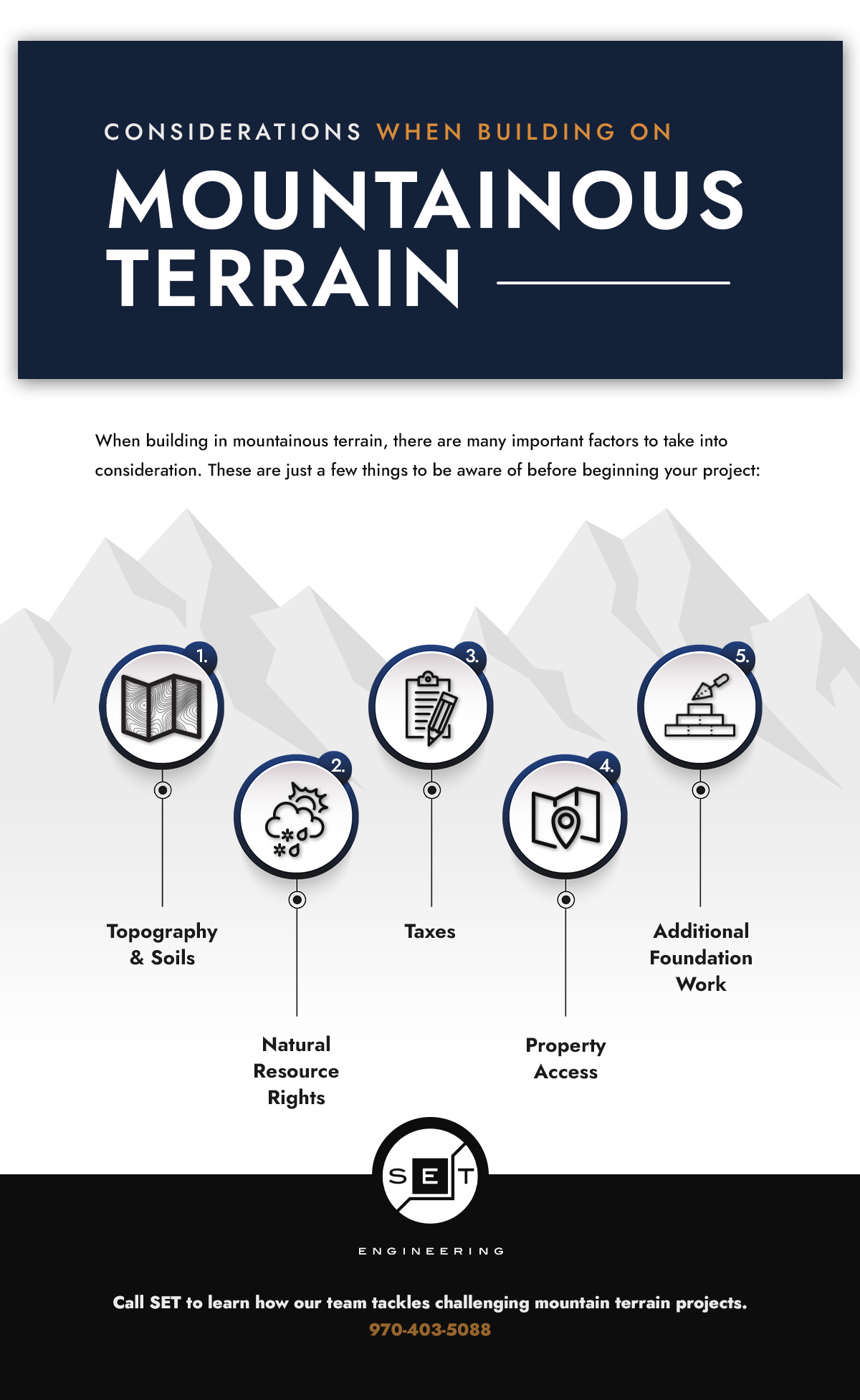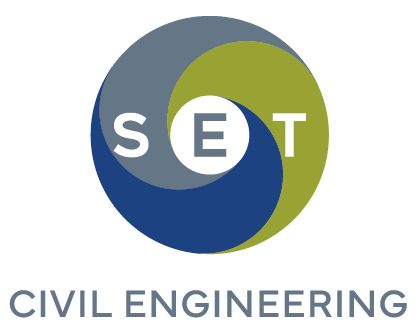Mountain terrain is known for having a handful of challenges, like slope instability problems, off-site drainage issues, erosion, and the transfer of high-quality construction materials. Because of these obstacles, the design of mountain terrain requires special expertise in relation to route alignment, geometric design, design of slope protection and stabilization measures, and geological/geotechnical factors. Development in mountain terrain requires a unique understanding of the geography and landscape, as well as a thorough knowledge of the weather and other area-specific factors. Heavy snow loads, slope engineering, surveying, drainage, and retaining structures are crucial components of effective and efficient mountain terrain development.
This blog is meant to give you a general idea of what important factors to consider, but is not an exhaustive list or a substitute for an experienced civil engineer! Contact the team at SET to learn how our team tackles mountain terrain projects.
Zoning and Setbacks
It doesn’t matter where you want to build — becoming familiar with the zoning and setbacks for your lot is a crucial step in any project. There may be protective covenants or design guidelines that must be considered at the beginning of the project planning process. Setbacks, which are the minimum distance from the lot lines to the structure, should also be considered, but their impact varies depending on the size of your project. On smaller projects of lots, the setbacks can dictate the size and placement of your home. However, on larger lots and projects, they have much less impact.
Site Work
Beautiful views draw many prospective clients to the mountains, but the postcard-like scenery is usually accompanied by a sloped site, which poses a challenge in development. The higher the degree of slope, the more technical, and therefore the more expensive it is to prepare the site. Many times, just getting the construction machinery and materials onto your property is an engineering exercise. Cutting and clearing the site can take many times longer on a slope than it would on a flat lot. Trees, boulders, root mat, and dirt often have to be picked up one bucket claw at a time and transferred to the street to be hauled away.

Utilities
When considering mountain terrain properties, utility placement is another imperative component of development. Ideally, it is best to search for a lot with utility connections, but there is always a possibility of work being done on a site that doesn’t have these systems in place. The further the property is from the electric line, the most costly it will be for the utility company to run a line to the boundary of the property. Access to natural gas or propane and the local municipal water system will also need to be hooked up to the property because the building can even begin.
Drainage
Proper attention to drainage is a key component that separates a successful project from an unsuccessful one — and is absolutely crucial to building on a slope. Rainfall runoff has to be redirected away from your home’s foundation, without endangering any neighboring properties or flooding public roads. Retaining walls have to be waterproofed and drained to prevent water from pooling, and swales and culverts must be utilized to channel the runoff to stormwater drains or soakaways.
Soil Type
The type of soil of a sloped property in mountain terrain can be easily overlooked, but an expert knows that soil type could pose problems for builders if not properly assessed. Granular soils like gravel, sand, or silt with little or no clay all drain well and can bear high loads, while solid with high clay do neither well. Certain clays can damage foundations by swelling or expanding when wet or frozen and may require expensive engineering fixes or additional fill of granular soil.
The civil engineering team at SET makes mindful planning the forefront of any mountain terrain project. Working closely with contractors and developers, we work to avoid costly project issues and ensure that the earth is handled properly and efficiently throughout construction. The civil engineers at SET are experienced in providing safe and cost-effective solutions for projects in rugged, mountainous environments. Give us a call today to learn more.
